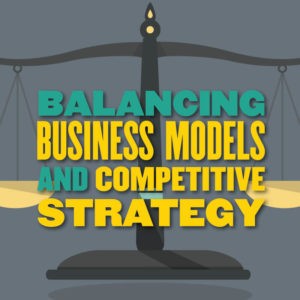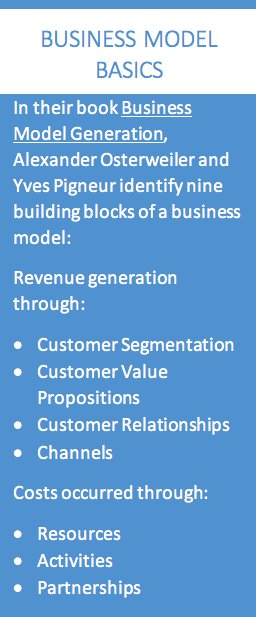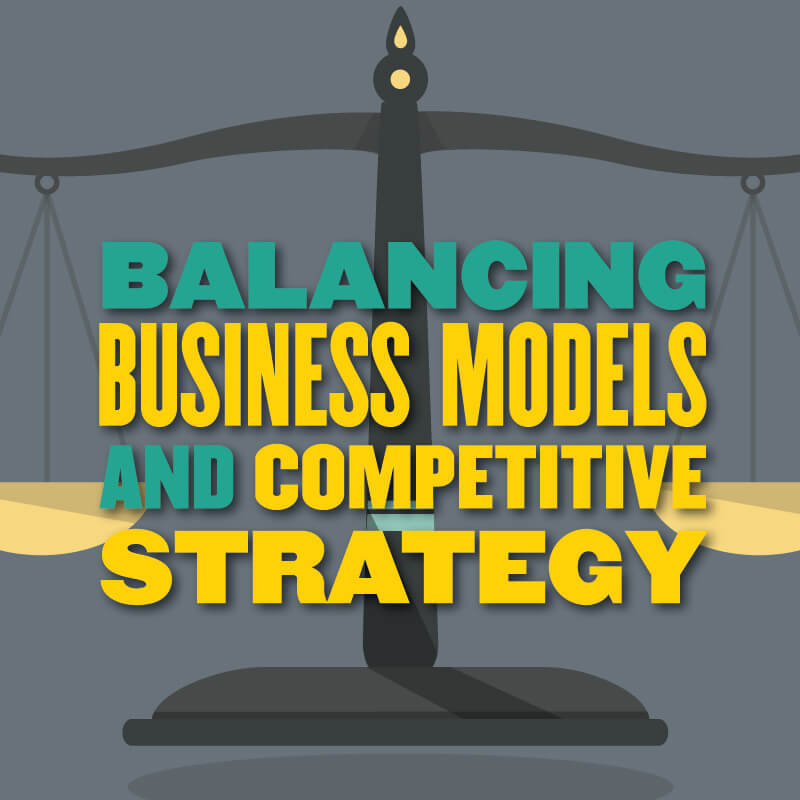Journal
Strategy and business models: Why winning companies need both by Braun, M., S. Latham and B. Cannatelli.
Article
Journal of Business Strategy, 2019. Vol. 40, No. 5 (39-45)
Reviewer
Allan W. Gray, Executive Director and Professor
Summary
The authors’ research identifies the current business trend of focusing considerable attention on business models, often at the expense of competitive strategy. The authors argue that long-term success requires firms to find a balance between competitive strategy and business model design. The article provides a useful model for understanding both the distinction of competitive strategy and business model design and the close relationship between the two. Finally, the authors identify four key firm positions with respect to competitive strategy and business model design. The four positions include:
- Idling: strong competitive strategy, weak business model
- Faceoff: strong business model, weak competitive strategy
- Breakdown: weak business model, weak competitive strategy
- Traction: strong competitive strategy, strong business model
What this means for Food and Agricultural Business
 Today’s discussion in the agribusiness industry tends to focus on disruption. The fast-paced changing landscape of agribusiness has incumbents considering when, how and even if they should react. Is the move by producers to buy more products through online platform here to stay? Does the digitization of seemingly everything demand that we have a digital strategy? What are the implications of autonomous vehicles and robotics for the future of logistics, application services or the need for pesticides?
Today’s discussion in the agribusiness industry tends to focus on disruption. The fast-paced changing landscape of agribusiness has incumbents considering when, how and even if they should react. Is the move by producers to buy more products through online platform here to stay? Does the digitization of seemingly everything demand that we have a digital strategy? What are the implications of autonomous vehicles and robotics for the future of logistics, application services or the need for pesticides?
Disruption often comes in the form of business models where we see new products, technologies and services that offer new value propositions to one or several customer segments. With the increasing role of data analytics in today’s agriculture, we see startup companies and new businesses formed by established players creating products and services that meet farmers’ needs for analysis of farm data. In many cases, these new offerings challenge the traditional role of agricultural retailers as the trusted advisor to farmers. The recent success of online platforms such as Farmer’s Business Network in attracting a segment of producers to buy products online has traditional agricultural retailers and product manufacturers wondering if this new business model is here to stay. We can identify a litany of other examples of new business models developing in the agribusiness space. In fact, Alexander Osterwieler and Yves Pigneur identify several different areas where a business model can be innovated (see Business Model Basics sidebar). Agribusiness incumbents must pay attention to these new business models and consider the implications for their value propositions and other parts of the business model.

While today’s environment challenges agribusiness firms to consider implications for its business models, the article suggests we must be careful to balance these business model considerations against the competitive strategy of the business. Competitive strategy is about positioning to win against competitors. Several times in the article, the authors mention the concept of “the moat” in considering your firm’s competitive strategy. The first time I heard the concept of “the moat” was from Warren Buffett as he described the types of businesses he wanted to invest in. He explained that a business is like a castle. The moat is intended to protect the castle. In business, the moat comes from positioning the organization to be protected against competitors through actions that create customer loyalty, market differentiation, greater economies of scale and other cost structure advantages, etc.
Agribusinesses must be mindful of both business model innovation and the changing landscape of competitive strategy. As the jobs our customers are trying to accomplish shift as a result of new technologies and increasing societal demands, new customer segments will emerge that allow for new value propositions to be offered by agribusinesses — challenging existing business models. Competition from current and new competitors is increasing, suppliers and customers are consolidating and the markets are pressuring margins for everyone. In this environment, we must consider the bigger strategic questions in addition to the business model. A.G. Lafely and Roger Martin (see Competitive Strategy Basics sidebar) would suggest considering questions such as, what products/service will we continue or eliminate? What markets will we enter or exit? Will we be a leader in cost, products or customer service? What investments must we make to build and leverage capabilities that create a competitive advantage for us relative to our competitors?
As you think about your company’s business model and competitive strategy, where would you fit among the authors’ four key positions? Are you idling? In a faceoff? Breaking down? Gaining traction? I hope you are finding a balance between the business model and competitive strategy that will allow your firm to have traction in this dynamic and exciting industry.




